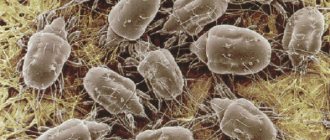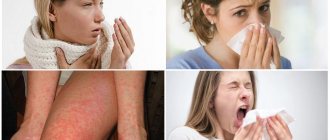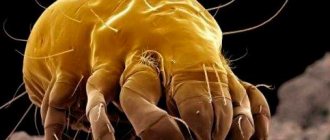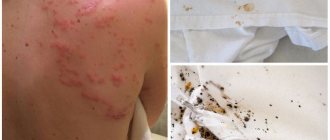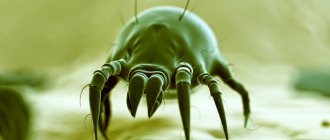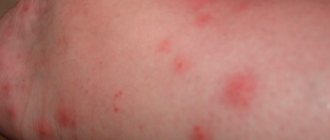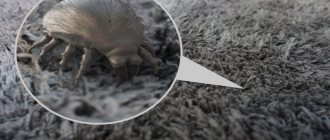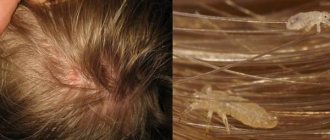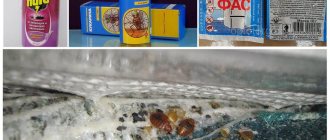Dust mites (otherwise known as house dust mites) are present in every room where a person lives or visits. These synanthropic insects simply cannot live without people, since the main food products of these creatures are dead cells of the human epidermis. In our article we will take a detailed look at what dust mites are and what they look like, and whether they bite people. We'll tell you what methods are best to get rid of them and what preventive measures to take to prevent their further spread.
Description
Dust mites are very small insects (type - arthropods) belonging to the class of arachnids. But this does not mean that they are like a spider in everything. Their limbs are not so long, they are poorly developed, but meanwhile, their strength is enough to move freely. They crawl slowly, constantly looking for provisions, which, in most cases, are dead cells of the human epidermis or the skin of domestic animals.
What do dust mites really look like? Most of all, they resemble bugs if their wings are torn off and their legs are shortened. A special difference is that they do not have a clear division of the body into segments. Their entire carcass, if you can call it that, is a solid “cutlet” (in a reduced form, to a size of 0.1-0.5 mm), slightly narrowed towards the stigma and thickened towards the back of the abdomen. In the front part, the stigma has a pair of small processes, reminiscent of hypertrophied mites, with which the insect sends the edible it finds into its mouth. Some compare them to hippos reduced to microscopic size. This is what a dust mite looks like in the photo, magnified many times over.
They live from 60 to 80 days, during which they manage to go through their entire life cycle, that is, to eat and copulate, after which the female lays up to 60 eggs.
How to get rid
Dust mites for the most part - up to 70% - live in beds. Modern washing vacuum cleaners with a water filter - with high power and good filtration - will help reduce the concentration of dust and deprive dust mites of food. Conventional vacuum cleaners pass dust particles through filters and blow them around the apartment.
The upholstery of chairs and sofas should be cleaned with vacuum cleaners with a dry cleaning function and an electric beater. It is not advisable to use brooms that are advertised as attracting dust. They just brush away the dust and scatter it in the air.
Dust mites cannot tolerate frost, direct sunlight or heat. Therefore, in winter you need to take bedding and pillows out into the cold. From time to time, warm up bed blankets and bedspreads in the dryer, if the machine has such a function. At a temperature of +40-60 C, ticks die. In summer, hang laundry in the sun. UV rays kill parasites and the allergens they contain are destroyed within 2 hours.
You need to air your bed linen and clothes more often.
At least once a week, wipe and wet clean shelves, window sills, floors and baseboards.
Ventilate the room more often, at least in the morning and evening, before going to bed, but it is better to keep the windows micro-ventilated all day. Check that the ventilation is working effectively. Dust mites, fungi and mold thrive in stagnant air.
Maintain optimal total humidity in the room - approximately 50%. Typically, the humidity in apartments does not rise above 20-25%. Humidifiers and air purifiers whose filters must be less than 30 microns in diameter to trap dust particles. Some models also ionize, disinfect and scent the air. When humidity decreases to 40% and temperature below 22 C, ticks will live no more than 11 days. Temperatures below 10 C kill them within 2 days.
To regulate the temperature, they came up with a lot of household appliances: air conditioners, split systems. Humidity is a little more difficult to determine. To do this, you will need a hygrometer - fortunately, an inexpensive device. Ventilate the room more often.
Pets' sleeping areas are ideal breeding grounds for dust mites. In order not to aggravate the situation, it is better to remove all rugs and carpets from the house. The animal itself should not have access to the bedroom, much less climb into the owners’ bed.
After coming home, be sure to change into slippers. Street dirt dries and turns into dust.
If you don’t have a few hours of time for daily dust cleaning, it’s better to get rid of everything that is difficult to clean: figurines and photo frames on the shelves, books in open cabinets, soft toys, multi-layered curtains with draperies and fluffy carpets. A minimalist style or high-tech trend in the interior will only help your health.
It will not be possible to completely get rid of unpleasant neighbors, but it is entirely within our power to significantly reduce their number and protect ourselves. And make house dust less hazardous to health.
What is dust and why do dust mites live in it?
This will come as a shock to many, but more than 20% of room dust consists of particles of the dead upper layer of skin, called the epidermis, flying off us. Moreover, the more people live in an apartment, the richer the content of skin flakes in the overall mixture will be. In addition to them, the household dust suspension contains:
- smoke particles (soot) 3%;
- fibers of various fabrics and paper – 12%;
- various types of mineral particles – 34%;
- flower pollen – 6%;
- other pollutants (fragments, flakes of animal hair, fluff, etc.) – 25%.
In winter, accordingly, there is less flower pollen, but there is more clothing, and therefore this 6% migrates to what falls off from winter outerwear. This is what dust looks like under a microscope.
Random guests
The reasons for the appearance of ticks at home can be completely varied. Quite often, you yourself bring the parasite into the house from walking on your clothes. Ixodid ticks are rare guests in an apartment or private house and end up indoors with people. A hungry insect attacks its prey and tries to get a portion of blood to complete the reproduction stage. A well-fed tick increases in size many times over due to its elastic chitinous cover. It should be noted that females are more bloodthirsty, unlike males. This factor is explained by the need to obtain a portion of blood to form the next clutch of eggs.
Favorite places to live
The more carpets, upholstered furniture and other textile decorations and interior items there are in the house, the more and faster dust will form in it. For example, carpets are a favorite habitat for dust mites. A huge amount of “provisions” always settles on them. The next photo shows dust mites that feel great among carpet textile fibers.
Separately, it is worth mentioning feather and down pillows, as well as mattresses. Scientists managed to have a hand here too, calculating that up to two million dust mites constantly live in an ordinary average double bed. And feather and down fillings, if there is a lack of food, can themselves become food for these microscopic creatures.
Household and other appliances deserve a special mention. Old monitors, stereos and DVD players are potential cities and breeding grounds for dust mites. There is always a lot of dust among the microcircuits, capacitors, resistors and other radio equipment, but if there is a lot of dust, and no one cleans it out for a long time, mites live in it especially freely.
Why are bloodsucker bites dangerous for humans?
Despite the fact that many viruses, causative agents of dangerous diseases, were found in bedbug droppings, scientists were unable to prove that pests are capable of infecting humans with various ailments. Apparently, nature has taken care of constant food for the bloodsuckers, because if the owner dies, the bug will have nothing to eat.
Bloodsucker bites are not so harmless:
- Serious allergic reactions, itching, and rashes on the body often occur. In sensitive people, Quincke's edema occurs, which is life-threatening (risk of suffocation). An allergic reaction to varying degrees has been detected in 80% of all inhabitants of the planet to the bites of these insects;
- Many people scratch very itchy wounds, opening the way for various infections, which leads to suppuration;
- Iron deficiency anemia is extremely rare and manifests itself when there are a huge number of pests in the house. This problem is also typical for young children;
- many people lose normal sleep and mental peace. After all, no one will be pleased to know that every night little bloodsuckers feast on your blood.
Can dust mites be seen with the naked eye?
When asked what a dust mite looks like with the naked eye, we will answer that these creatures cannot be seen even under a magnifying glass. On average, the size of ticks is 0.2 mm, which means that without special equipment these creatures simply cannot be detected. And the way dust mites look under a microscope causes horror and disgust for many. These are pests with a repulsive appearance, and from their very appearance it becomes clear that nothing good can be expected from them.
Bed bugs
Bed bugs are sometimes called ticks simply by mistake - they stick to the skin and suck blood like forest ticks, and these parasites can actually often be found on bedding.
At the same time, bed bugs have little in common with true mites. For comparison:
- A bedbug bites many times in one foray, sucks blood for a short time, and after quickly satiating, hides in a shelter. The ixodid tick bites only once, and having attached itself, it sucks blood for several days, and only then detaches itself;
- Bedbugs have 6 legs, and ticks have 8;
- Bed bugs live only in human housing (with rare exceptions - for example, they sometimes live in caves where bats live), and ixodid ticks live in the wild.
The habitats of bed bugs in an apartment can be very different. Bedbugs hide in sofas, beds, under the upholstery of upholstered furniture, under peeling wallpaper, behind baseboards, under cabinets, and are found in electrical outlets, household appliances, and flower pots. Here you can find so-called “nests”, where a large number of insects gather, eggs, chitinous coverings, and excrement accumulate.
At the same time, bed bugs rarely settle in linen and clothing. A parasite may end up here by chance, but if a person is wearing such clothes, the insect will try to retreat as quickly as possible so as not to run the risk of being discovered and killed.
Thus, in any case, the term “clothes mite” is a misnomer. How to understand what kind of parasite or pest was found at home and what can be done to reliably get rid of it - let's figure it out...
Dust mites from a medical point of view
Let's now look at the problem from a medical point of view: what is a dust mite? And how to get rid of it? And in general, is this possible? Let's start with the first question. Doctors warn that dust mites are harmful pathogens of bronchial asthma. They can often be carriers of other dangerous infections. In addition to bronchial asthma, they can also cause:
- conjunctivitis;
- rhinitis;
- respiratory allergy;
- allergenic dermatitis;
- Quincke's edema.
Any reaction of the human body to the effects of mites and the enzymes they secrete is summarized under the single name “mite sensitization.”
Effective methods for treating bites
The body of many people responds adequately to bed tick bites, and they heal on their own within a few days. There are people when they need to provide emergency assistance, since their body reacts very specifically. In cases where atypical reactions occur, it is necessary to:
- Thoroughly wash the bite areas with soap or soda solution, after which they are rinsed with clean running water. To prepare the solution, you need to take a glass of water and add to it a tablespoon of soda or liquid soap.
- Bite areas should be disinfected with any alcohol-containing product, such as vodka or moonshine, cologne or perfume.
- Severe itching indicates an allergic reaction. To reduce these symptoms, you can use both pharmaceutical and folk remedies.
There are a number of effective and proven recipes. For example:
- Bite areas should be wiped with pure vinegar. There is no need to rinse off the product.
- You can apply a piece of ice or some product from the freezer to the bite site.
- If you apply a used bag of black or green tea to the site of the bite, this will relieve the victim of discomfort.
- Lotions are also made based on medicinal herbs. St. John's wort is considered the most effective remedy. To prepare the solution, you need to take a tablespoon of St. John's wort and pour a glass of boiling water. After the infusion has cooled, a cotton pad is soaked in the infusion and applied to the wound for half an hour. Herbs such as chamomile or calendula are suitable. The product is prepared in the same way as using St. John's wort.
- Treatment with a composition based on aloe and plantain. After mixing the ingredients, the wound is treated several times a day. The juices of these plants help reduce swelling of the bite site, reduce itching and have an antibacterial effect.
- Onion and garlic juice combined together act on the bite site in a similar way. The smell of onions and garlic, in addition to relieving discomfort, helps repel these bloodsuckers.
- You should drink at least 5 tablets of activated carbon to remove toxins from the body as quickly as possible.
As a rule, folk remedies help a person cope with negative consequences in the initial stages. If these remedies do not cope with the task, then you should use pharmaceutical remedies. Alternatively, you can use essential oils, which have the same effect as herbal infusions.
- Lemon.
- Orange.
- Lavender.
- Geranium.
- Tea tree.
- Needles.
- Juniper.
- Cypress.
- Sagebrush.
- Mint.
There are both special remedies developed for the bites of various insects, and non-special ones, but which cope with this task. The thing is that each body reacts differently to bed tick bites.
As a rule, the following pharmaceutical products are used:
- Special ointments “Fenistil” and “Rescuer”. These remedies have a wide spectrum of action and help relieve the victim of negative consequences.
- Vietnamese star, which is characterized by the manifestation of an antibacterial effect.
- Afloderm helps to cope with severe itching.
- Propolis tincture is effective against any bites.
- Afloderm ointment is used with Tavegil, which helps relieve the symptoms of allergic reactions.
- The “Tsindol” talker will easily cope with the task.
- Akriderm perfectly relieves signs of inflammatory processes.
Do dust mites bite?
We have already seen what dust mites look like. From the photos provided, it becomes clear that they do not have “biting” organs as such. In everyday life, we are used to calling a bite - pricks with a sting (for example, a mosquito), pinching the skin with the front claws on the snout (some spiders, forest mites, meadow mites, beetles), etc. But this does not apply to dust mites. Even if they have a hole with some kind of mandibles, with which insects absorb all the same scales of the upper layer of the epidermis that once fell off a person, then they are simply not able to bite the skin tissue with them.
They will not be able to pinch her in any noticeable way. These creatures are so tiny that any of their mechanical effects on the epidermis will be unnoticeable from an anatomical point of view. By their effects on skin tissue, they will not be able to excite more than a single nerve receptor in the human body, regardless of its location.
Plus, dust mites can only digest particles of dead epidermis. Living skin is not food for them. In scale and biological proportions, a tick bite can be compared to what it would be like for a person to want to bite the thigh of a boar that is 100 times larger in size. Firstly, the material is too rough - not suitable for human teeth, and secondly, the surface tissue of a boar's thigh will not be suitable for food.
But some may protest, they say, we’ve all seen what dust mite bites look like, so where do they come from if mites don’t bite?
Where do linen mites live?
Acarida (linen mite) cannot be seen without a microscope, it is so small. This harmful specimen belongs to the class of spiders. Its size is only a fraction of a millimeter. This tick has 6 legs, which have suction cups that allow it to attach to the surface very securely. That is why it is difficult to remove it mechanically both from carpets and from clothes, linen, and furniture. The body itself is covered with a special water-repellent substance, which indicates that it is impossible to get rid of acarids using various liquids.
Ticks love dark places with high humidity.
Ticks reproduce in favorable conditions—high humidity and places where there is no direct sunlight. Often such an atmosphere occurs in a sleeping area, where there is an abundance of upholstered furniture (especially not new ones) and carpets. Despite its short lifespan (2 - 3 months), the female mite manages to lay several hundred eggs, which makes getting rid of pests not the easiest. About the parasite, watch this video:
The linen mite does not stick to the human body; it feeds on those physiological manifestations of the body that remain on linen and furniture (fallen remains of dead skin, dandruff, hair particles). Also, acarids do not disdain food debris, plant fibers (cotton, coconut, flax), even particles of paper.
What is a dust mite bite?
Dust mite bites are popularly known as redness that appears in places where human skin has been exposed to the enzymes they secrete, which permeate the feces of microscopic insects. Each tick can “go to the toilet in a big way” 20 times per day, so on the scale of a double bed this will be a real disaster for a person in whom this enzyme can cause an allergic reaction.
Usually people have a strong immunity to this substance. But there are still exceptions. In addition, there are many varieties of dust mites themselves, and it is possible that feces of a certain variety may not be “suitable” for some person.
Ticks or bedbugs in the sofa? What is the danger of an unpleasant neighborhood?
The presence of bedbugs is determined simply: allergic reactions of unknown etiology, the presence of scatterings of red microscopic dots - bite marks. The sleep disorder and other symptoms are easily explained - these bloodsuckers like to create their nests in the thickness of bedroom furniture, including sofa upholstery, or near the resting place.
Parasites feed on human blood and their activity increases at night. Small pests inject a small amount of anesthetic under the skin, which is why the bite itself is not felt. Consequences appear: skin irritation, swelling of certain areas, allergies. Have you discovered similar consequences in a complex? This means that bedbugs have settled in the room.
Which:
– are potentially dangerous for allergy sufferers;
– capable of transmitting a variety of infectious diseases.
Who should be most concerned about dust mites?
People with asthma and children are most often susceptible to tick-borne sensitization. If a child, for no apparent reason, suddenly starts coughing and develops a runny nose, and there are no outbreaks of diseases around, most likely the reason is the baby’s body’s reaction to the presence of too many dust mites in the home.
Also, symptoms of dust mite allergy in children are pronounced redness on the child’s skin (dermatitis) that appears out of nowhere. There is no need to be afraid of such irritations, since modern medicine has easily learned to cope with such allergic manifestations. A photo of dust mite bites on a person’s body looks quite unpleasant.
If you notice similar irritation on your child’s skin, this means that the number of insects has exceeded all permissible limits and it’s time to take house cleaning seriously, arranging a real Armageddon for uninvited roommates.
Manifestations of allergic reactions
The consolation is the fact that the linen mite is not a carrier of diseases and does not feed on human blood. However, a victim of this parasite will notice traces in the form of small redness (wounds), skin itching (irritation), and scratching at the bite sites are often noted. Such marks are an indicator of an allergy, not the bites themselves.
The tick dies, turning into dust, like its waste products. A person is constantly in contact with a large amount of acarid excrement, which has turned into garbage, and inhales it for several days. It is this dust that causes allergic reactions. Allergy sufferers have the hardest time when coming into contact with linen mites: such people may experience a rise in body temperature, watery eyes, redness of the eyes, and in rare cases, skin pathologies such as eczema and dermatitis may even develop.
Mite allergy is manifested by fever, lacrimation, dermatitis
All these phenomena can be complicated by coughing, sneezing, and sore throat. If a child has symptoms of bronchial asthma and the disease does not go away with adequate treatment, it is appropriate to visit an allergist to identify the pathogen, which can be the vulgar linen mite.
Destruction measures
In a specialized store you can find a wide variety of products that can help get rid of ticks that have multiplied in your home. In most cases, these products are sprays that are completely safe for humans, but at the same time, lethal for hated insects.
They should be used to treat mattresses, pillows and blankets. The removed bedding can be soaked in hot water so that all the creatures nesting in it can die. The most comfortable temperature for these insects is 15-25 °C. Frost or high temperatures are fatal to them.
Special cleaning products in the form of concentrated shampoos are produced for treating carpets and rugs. If you wipe floors and other surfaces with a solution of such a product, as well as clean carpets, all the pests inhabiting them will certainly go to the next world.
Be that as it may, no remedy will help you get rid of dust mites 100%. But it is possible for humans to reduce the insect population to a safe minimum.
How much does it cost to remove ticks from beds: professional services
The most effective, proven way to get rid of household pests is to turn to professionals. Exterminators use special equipment and tested, certified products.
Only representatives of a specialized company are guaranteed and safe to clean interior items from ticks without causing damage to property. Exterminators will disinfect hard-to-reach places: thick textile upholstery, cracks or crevices using suspensions.
Portable cold fog generators create a suspension of small particles that slowly envelops objects and penetrates deep into textile upholstery. A hot fog generator in a special chamber, when heated, converts insecticides into a micro-dispersed cloud cooled at the exit of the device. It can remain in the air for a long time and penetrate into the pores of wood, silicone or foam filling of pillows.
Experts say: treating your sofa against ticks on your own will not bring the desired result. Insects will leave the uncomfortable item for a while and return again. That is why serious control of bedbugs and long-term removal of ticks will require a holistic procedure for the entire home.
The cost of work performed by specialists is always affordable. It depends on the area of the room, the chosen method and the type of insecticide. The distance of the object is taken into account. The exact amount is discussed over the phone when concluding the contract. The customer can obtain detailed information by talking with the manager. The sanitary service is ready to consider a problem of any complexity and promptly go to each interested client.
Prevention
To prevent pests from breeding again, basic preventive measures should be followed. Here is a list of actions that will help keep the dust mite population under control:
- A general wet cleaning should be carried out weekly in each residential area. If you don’t want to spend money on special products, you can splash a little vinegar essence into a basin or bucket of water. The smell will go away within an hour, but the creatures will die with even greater intensity.
- All upholstered furniture must be thoroughly vacuumed. The disadvantage of ticks is their light weight and clumsiness. They don't run away from a vacuum cleaner like rats. Moreover, due to their underdeveloped minds, they will not at all understand how such a cruel relocation to a landfill befell them. They nest mainly in the upper layers of upholstered furniture, since there is no food for them inside the upholstery. Therefore, a larger number of their “personnel” will definitely be collected with a vacuum cleaner.
- In the summer, take pillows, blankets and mattresses out to dry in the sun. Not only that, insects will die from excessive overheating, but ultraviolet radiation itself is also destructive for them. In a few hours of such a “sunbath”, your bedding will get rid of the lion’s share of the total number of ticks nested in them.
- In winter, in sunny, frosty weather, your laundry taken out into the fresh air will be completely free of every single tick. If the sun was unable to penetrate inside a down or feather pillow in the summer, then the frost will certainly penetrate it to the ground.
We should not forget that the fewer stale things, carpets and other products, small parts, hard-to-reach cracks and old household appliances in the apartment, the less number of breeding grounds you will have that produce ever new hordes of mites. Get rid of everything unnecessary, and you, without any doubt, will breathe easier, and this was said in the literal sense of the word.
Signs of bed mites in your home
The most reliable method for determining these parasites in bed is to conduct laboratory tests. But when not everyone can use this method, it is easier to determine their presence by the person’s condition and the symptoms that appear:
- Lumpy rashes on the skin without bite marks;
- Possible (extremely rare) increase in temperature for no apparent reason;
- Sneezing without cold symptoms;
- Problems with respiratory function, wheezing;
- Inflammation of the mucous membranes in the eyes and nose;
- Rhinitis.
Children whose immune systems overreact to irritants are the first to suffer from the parasite. Moreover, it is skin reactions that appear first. But the bed tick bite itself cannot be detected on the skin due to the miniature size of the individuals.
Often, such symptoms can be attributed to other conditions - from dermatosis to diaper dermatitis and are not at all associated with the presence of a pest. But then the condition will regularly make itself felt, since it was not possible to get rid of the bed mite as the cause of the condition.
To suspect the presence of bed mites in a room, the easiest way is to examine your household and analyze the so-called sudden “allergies and colds.” Their significant increase should signal that invisible neighbors have settled in the home, and they should be dealt with as soon as possible.
